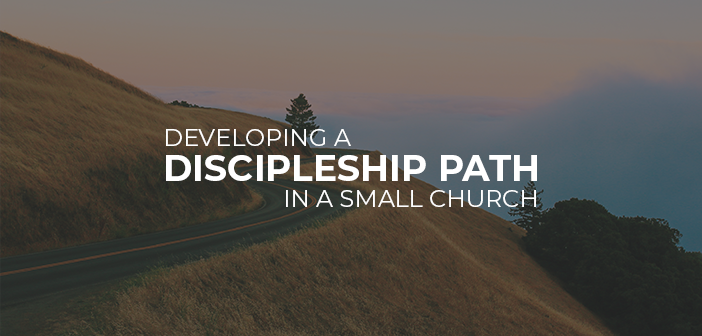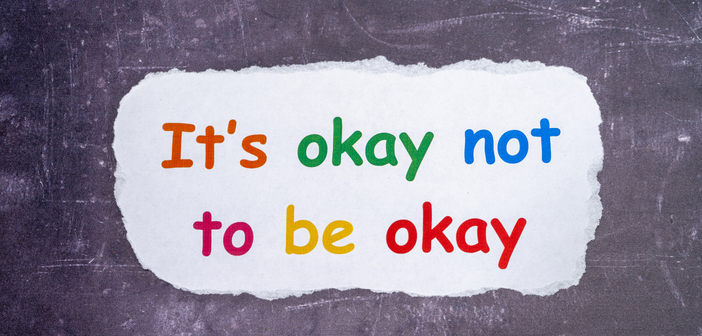Discipleship is ultimately what defines a church. Our ability to lead people in their relationship with Christ is what the Church is all about. However, many times we miss opportunities for discipleship when we invest our energy into a bunch of programs instead of organizing our efforts through a discipleship path.
What is a discipleship path?
A discipleship path is created by simply defining the next steps on someone’s spiritual journey with Christ. Creating a discipleship path helps you organize your efforts for spiritual formation within your congregation.
Because this is such an important topic as we work with churches, we took some time to record a short video that discusses this topic. Though we usually host conversations like this for our 95Network Members, we wanted to share this one publicly.
So take a moment to check out this conversation and begin the process of creating a discipleship path within your church:
Video Transcript:
AUSTIN: Hello everyone, my name is Austin Savage and I am the Director of Communications here at 95Network and today we just wanted to take a few minutes to talk about discipleship and particularly how to develop a discipleship path and why that’s important. So Dale, just to start us off, can you explain what a discipleship path is and how it differs from other models of discipleship?
DALE: Well sure, Austin. I think one of the big issues that some churches have is they use the word discipleship, but really, they don’t know what it means. It means so many different things to so many different churches. In fact, I worked with a church recently where I was with the leadership team and they kept throwing around that word, so I finally said, “Guys, kind of describe what discipleship means to you,” and they couldn’t do it. And so that really helped me understand something. Simply put, a discipleship path is a process used to help people take their next steps toward a walk with Jesus. It’s also a way that we help people achieve maturity in their faith life, which is the goal. You and I talk a lot about Ephesians 4 as far as structuring the church, and one of the goals of Ephesians 4 is for a pastor to equip saints to do ministry and it teaches us that they will have maturity. So, simply put, a discipleship path is the process you use to help people mature.
AUSTIN: Yeah, and I think it’s also important to highlight there too is the difference with a church that has a discipleship path compared to other churches is that they’re not as much program-based but pathway-based. So talk a little bit about kind of the difference there as well.
DALE: Well, I think what we’ve discovered is that many churches have lots of programs. In fact, I’ve heard of churches that have 100 members that have 150 programs, which is ridiculous. And so what happens is basically you have programs because you want to try to provide something for everyone, but there’s no clear goal in mind at the end. Whereas when you have a path, you have something you’re trying to achieve which hopefully helps people to take their next steps in their walk with Christ, you know, our whole objective and the church is to create positive spiritual formation to help people grow. And so that’s kind of the difference between having a path, one or two ways that you’re going about doing something, versus multiple activities that so many churches have where they just have so much going on.
AUSTIN: Yeah. So on your description there, I wanted to highlight the words “next steps.” Your whole goal is to have next steps available for someone no matter where they’re at on their spiritual journey. Whether they just came to Christ and it’s, you know, maybe an introductory class for something for it’s a clear next step for them to take or whether they’ve been following Christ for years and they’re still looking for ways to continue developing their faith.
DALE: I think that’s perfect. Also, I think one of the things churches need to ask themselves, let’s say you had someone come to Christ this week or even Sunday in your service, are there clear next steps for what they should do next? Like do they know is there a signup for baptism? Do they understand what baptism is all about? Is there a new members class? And so “next steps” are huge words that help you take your next steps in your path.
AUSTIN: Yeah. So that’s kind of what a discipleship path is. So next step for us here is how can churches start developing a discipleship path for their specific ministry in their context?
DALE: Well, as we’ve worked with many churches here at 95Network, one of the things that we talk about are some very important growth engines, if you will, or actions churches can take to grow, and you can’t really define a good discipleship path without, first of all, clarifying what your mission and vision is. If you don’t know what your mission and vision is, you really can’t develop a good discipleship path. Now, again, we’ve talked about this before, but I want to remind folks that your mission basically describes why you exist. What is the purpose of you gathering on Sunday morning? What is it you’re trying to accomplish that day?
And I think many of our churches have so much chaos, if you will, in organization because they have no idea what they’re trying to accomplish. And so your mission is really something that you design that helps everyone in the church. Every one in the church from the youngest child to the most senior saints should know the mission, what it is you’re trying to accomplish in your individual church in your town. Your vision is more along the lines of what your leaders understand, which you put in place some measurables, to help you define how we are doing and accomplishing our mission.
I just last week had a conversation with a pastor, and I could tell he was resistant to this conversation because he’s like, well, you know, you just want to be all about numbers. Well, the truth of the matter is everybody is a number if you want to look at it that way, but that is not what it’s about. Your vision is how you keep up with the progress of what you’re doing with your mission. So you have to have a clear mission and a clear vision. And once you know what you’re trying to accomplish, then you develop your discipleship path to help you fulfill your mission and vision. Ultimately, the discipleship path should be the formation process that fulfills your mission or vision.
AUSTIN: Yeah. Expand on that a little bit more. So how does this vision influence our discipleship efforts? We talk about how a lot of churches kind of just copy things from another church or another ministry that they respect. How can a church use their vision and their mission to specifically develop a path that can help them reach their goals?
DALE: Well, let’s just make an example here of what it would look like in a small church. So let’s say your mission and vision for your church is to help build young families. So many churches today realize they don’t have young families. So your discipleship path, and again, this is unique in some ways to where you are geographically and what, whether you’re in a city, rural, there’s different factors, but your discipleship path would be what you do to provide opportunities to help, let’s say with marriage assistance, or maybe some parenting classes or development.
If you’re going to have a church where your mission and vision is to have young families, on your discipleship path, you have to have a very strong children’s ministry, a very strong youth ministry. And one of the other things we’ve discovered is a lot of young families need help with finances, so something like Financial Peace or a financial class, anything that the culture is dealing with today on a large scale that would help define your path. So look around: what are they talking about around you? What are you dealing with in your town? Then, as you develop your mission and vision, the discipleship path you put in place is how you help the families in your town accomplish maturity in these areas.
AUSTIN: I think that’s a great example there, Dale. So that kind of highlights on maybe one aspect of that pathway. For example, for young families to have a financial class available to them. How can a church think through also that beginning aspect of the path for new believers and then also maybe something for further development for families who have been in the church for awhile?
DALE: I think at the end of the day, you have to know what your goal you have in mind is. What is it you’re trying to accomplish? So let’s say you take a new believer, someone who just come to Christ in your church and they go through baptism, what do you want them to look like in a year spiritually? What do you want them to know? Do you have books of the Bible you want them to learn? Are there some specific things about the tenants of the faith, some basic fundamental things you want them to learn? Set in your mind, what the end result looks like, and then back up from there and put in place the process that takes to accomplish that. The difference between a discipleship path and just having a lot of activities is that activities accomplish a lot of different things that create busyness, they keep people active, but they don’t necessarily accomplish any type of spiritual formation.
With a discipleship path, you can measure, you can see, okay, this young person came to Christ last year, and this year they’ve accomplished these things. And when you have a path in mind, it also helps you to have accountability that you as a church and a leadership team are accomplishing those things. So what you need to do is kind of determine, by looking in the future, what does it look like if a person goes down this path? What do they look like in a year from now? What do they look like in 3 years from now? What is it we’re accomplishing to help them become more like Jesus, which honestly is what the Church should be about anyway.
AUSTIN: Absolutely. Yeah. I love that kind of distinction there. Your goal with discipleship is not to keep people busy, which is easy to do, right? Just with programs and stuff like that. Your goal is to put steps in place to give people clear actions that they can take to further their relationship with Christ to, you know, become more like Christ as they move forward on their spiritual journey. Love that. So, last question here, Dale, that I just want to highlight real quick. We recently had a pastor just kind of express a little bit of concern with this model, particularly because he felt like it’d be hard to have enough volunteers to, you know, have enough classes or whatever those next steps are to be able to make this work in a small church setting. And we highlight this in small churches all the time, this is one of the most important things that you talked about. It’s one of the growth engines that we highlight at our events and in our content all the time. We think it’s really important. So how can pastors make this work in a small church setting when maybe, you know, there’s not as many people who can volunteer to lead a class or something like that.
DALE: Well, I think the first thing you have to recognize is if you began to lead your church with more of a discipleship path, instead of having a lot of programs and activities, you’re going to need less volunteers instead of more volunteers. Most small churches today feel like they don’t have enough volunteers. Well, it’s probably because you have too many programs in place and you have no clear result that you’re trying to accomplish other than just having an activity.
I heard John Maxwell say many years ago that activity doesn’t always equal accomplishment. So, if you have a clear discipleship path, you actually will need less volunteers and you hopefully will get people more within their gift set as they do that. Another thing I think, my hunch is with that particular church is they probably don’t have a clear mission and vision that’s being communicated. Even if they have a mission and vision they’re trying to accomplish, if they’re not communicating that, then basically you have that last verse in the book of Judges, which says, “In those days there was no king and everyone did what was right in their own eyes.”
Sometimes people have very sincere motives when they’re doing a lot of things because they realize the church doesn’t have momentum or we’re not growing or they’re worried, but just creating a program to have activity does not accomplish any kind of end goal except keeping you busy and it’s very important to note if you’re going to take and begin to have a clear discipleship pathway, you’re gonna have to say no to some things you’re currently doing and you’ll probably going to have to say no to some things that people want to add later. One of the things that we discover happens in churches that begin to build momentum is once you start winning, everybody wants to be part of the team, so they tend to want to add things, and you just can’t do that.
The thing about having a clear discipleship pathway is to pare things down and make it simple. If you’re going add a discipleship path to your already existing programs, you won’t accomplish a discipleship path. A discipleship path is a very singular thing and it’s really what the church is about. So it’s very important if you do a lot of activity that you understand you don’t call that discipleship, but also you can’t have a lot of programs going on, and have that competing with discipleship. Discipleship really has to help you define what you believe God’s called you to do as a church with your mission and vision. And it will require you to say no to a lot of other programs.
AUSTIN: Yeah. So especially, we’re talking about in a small church setting, having a discipleship path is more sustainable than having a program-driven church because you’re focusing your efforts on where you need volunteers and you’re clarifying what the goals are and what’s needed from the people within your church as far as serving opportunities go, but then also for, whether it’s new people or anything like that, of how people can get developed on their journey with Christ. So we believe that it’s way more sustainable.
DALE: And another phenomenal tool that’s happened to help the small churches that they have not embraced yet, but we’re trying to help them understand, is just simply using technology. There is so much technology that’s designed today to help with discipleship, with volunteer training. We have several strategic partners that we have connected with who help provide tools and videos and trainings to help, whether it’s in children’s ministry or any form of discipleship or training your volunteers, in a small church today, you’re gonna have to learn how to embrace technology and use it and let it be something that, instead of running from it or are feeling like it’s not godly, that you embrace the technology to help you ultimately accomplish your end goal, which is to grow people up in Jesus.
AUSTIN: Absolutely. Well, Dale, that kind of wraps up our time here. But we get a lot of questions, particularly as we mentioned about discipleship paths and what that looks like. So I just think this was a helpful conversation in kind of clarifying what a discipleship path looks like and how churches can begin developing one.







